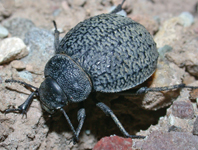Abstract
Scientific illustration continues to remain a critical part of taxonomy. Illustrations often require lots of time and, in many cases, the results are not as expected. At present, taxonomy journals only accept high quality digital illustrations; thus, image manipulation programs using vector or bitmap graphics have become the new focus of attention. This paper provides a step-by-step guide to making illustrations using bitmap graphics in Autodesk SketchBook. This application provides an alternative to other known tools by allowing: 1) faster illustrations; 2) direct drawing with a wide range of tools that simulate traditional drawing; 3) more detailed illustrations; and 4) an easy interface and work-flow for novice illustrators, all while being completely free and compatible with multiple operating systems.
References
Bober, S. & Riehl, T. (2014) Adding depth to line artwork by digital stippling – a step-by-step guide to the method. Organisms Diversity & Evolution, 14, 327–337.
https://doi.org/10.1007/s13127-014-0173-7
Bouck, L. & Thistle, D. (1999) A computer-assisted method for producing illustration for taxonomic descriptions. Vie et Milieu, 49 (2/3), 101–105.
Brecko, J., Mathys, A., Dekoninck, W., Leponce, M., VandenSpiegel, D., & Semal, P. (2014) Focus stacking: Comparing commercial top-end set-ups with a semi-automatic low budget approach. A possible solution for mass digitization of type specimens. ZooKeys, 464, 1–23.
https://doi.org/10.3897/zookeys.464.8615
Coleman, C.O. (2003) “Digital inking”: How to make perfect line drawings on computers. Organism, Diversity and Evolution, Electronic Supplement, 1–14. [http://senckenberg.de/odes/03-14.htm]
Coleman, C.O. (2006) Substituting time-consuming pencil drawings in arthropod taxonomy using stacks of digital photographs. Zootaxa, 1360 (1), 61–68.
https://doi.org/10.11646/zootaxa.1360.1.4
Coleman, C.O. (2009) Drawing setae the digital way. Zoosystematics and Evolution, 85, 305–310.
https://doi.org/10.1002/zoos.200900008
Coleman, C.O. (2018) Shadings in digital taxonomic drawings. Zoosystematics and Evolution, 94 (2), 529–533.
https://doi.org/10.3897/zse.94.28624
Holzenthal, R.W. (2008) Digital Illustration of Insects. American Entomologist, 54, 218–221.
https://doi.org/10.1093/ae/54.4.218
International Commission on Zoological Nomenclature (ICZN). (1999) International Code of Zoological Nomenclature. Fourth edition. International Trust for Zoological Nomenclature, London, xxix + 306 pp.
https://doi.org/10.5962/bhl.title.50608
Keyserling, E. (1885) Neue Spinnen aus America. VI. Verhandlungen der Kaiserlich-Königlichen Zoologisch-Botanischen Gesellschaft in Wien, 34, 489–534.
https://doi.org/10.5962/bhl.part.26502
Mayr, E., Linsley, E.G. & Usinger, R.L. (1953) Methods and principles of systematic zoology. McGraw-Hill Book Company Inc., The Maple Press Company, York, PA, 328 pp.
Montesanto, G. (2015) A fast GNU method to draw accurate scientific illustrations for taxonomy. Zookeys, 515, 191–206.
https://doi.org/10.3897/zookeys.515.9459
Montesanto, G. (2016) Drawing setae: a GNU way for digital scientific illustrations. Nauplius, 24, 1–6.
https://doi.org/10.1590/2358-2936e2016017
Winston, J.E. (1999) Describing species: Practical taxonomic procedure for biologists. Columbia University Press, New York, 518 pp.
Zweifel, F.W. (1961) Handbook of biological illustration. University of Chicago Press, Chicago, 152 pp.


